 |
|
Oceana Nas /apollo Soucek Field/ Airport |
Naval Air Station Oceana
Apollo Soucek Field |
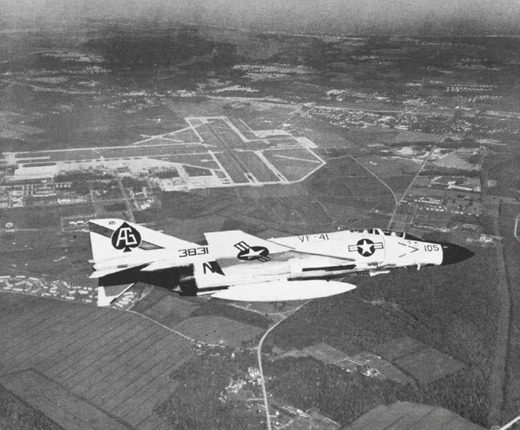 |
| IATA: NTU – ICAO: KNTU - FAA: NTU |
| Summary |
| Airport type |
Naval Air Station |
| Operator |
United States Navy |
| Location |
Virginia Beach, Virginia |
| Built |
1943 |
| In use |
Active |
| Commander |
CAPT Mark R. Hunter |
| Coordinates |
36°49′14″N 76°02′00″W / 36.82056°N 76.0333333°W / 36.82056; -76.0333333 |
| Runways |
| Direction |
Length |
Surface |
| ft |
m |
| 5R/23L |
11,977 |
3,651 |
Asphalt/Concrete |
| 5L/23R |
8,001 |
2,439 |
Asphalt/Concrete |
| 14L/32R |
8,000 |
2,438 |
Asphalt/Concrete |
| 14R/32L |
7,999 |
2,439 |
Asphalt/Concrete |
Naval Air Station Oceana or NAS Oceana (IATA: NTU, ICAO: KNTU, FAA LID: NTU) is a military airport located in Virginia Beach, Virginia, and is a United States Navy Master Jet Base. It is also known as Apollo Soucek Field, named after Lieutenant (later Admiral) Apollo Soucek, who was a Navy Test Pilot and world record altitude holder in 1930, having flown a Curtiss "Hawk" biplane to an altitude of 43,166 feet. It is the only Master Jet Base on the East Coast. History
In 1940, the U.S. Navy acquired the land that would eventually become Naval Air Station Oceana. At that time, the surrounding area was mainly farmland susceptible to flooding, but it served as a useful outlying field for the rapidly expanding Naval Air Force centered at NAS Norfolk and allowed units to work up for deployments away from the crowded base there. Airspace and airfield facility restrictions precluded NAS Norfolk from serving as the home station for tactical air units, and in the 1950s NAS Oceana was expanded to Master Jet Base status to serve that purpose. NAS Oceana has grown to become one of the largest and most advanced air stations in the world, comprising 6,820 acres (including Dam Neck Annex). Obstruction clearances and flight easements total an additional 3,680 acres (14.9 km). Its four runways—three measuring 8,000 feet (2,400 m) in length and one measuring 12,000 feet—are designed for high-performance aircraft. NAS Oceana's primary mission is to train and deploy the Navy's Atlantic Fleet strike fighter squadrons of F/A-18 Hornets and Super Hornets. Naval Aviators and Naval Flight Officers stationed at NAS Oceana fly approximately 219,000 training operations each year.
Under the Navy's Master Jet Base concept, all Type/Model/Series (T/M/S) aircraft were homebased at one field with associated intermediate maintenance and training facilities. In the 1960s, NAS Oceana became the home to all East Coast based F-4 Phantom II squadrons. Fighter Squadron 101 (VF-101) established a detachment at NAS Oceana in its role as the Fleet Readiness Squadron (FRS)...formerly known as the Replacement Air Group or "RAG"...that trained aircrews and maintainers to operate the Phantom (at the time, VF-101 operated out of NAS Key West, Florida). After the F-14 Tomcat arrived on the scene in 1976, VF-101 transitioned to Tomcat operations and Phantom training operations shifted to newly established Fighter Squadron 171 (VF-171) to handle Atlantic Fleet training for the F-4 Phantom until it was retired from service in 1984. The last F-14 was retired on 22 September 2006. At one time, in addition to fighter aircraft, all of the Atlantic Fleet's A-6 Intruder medium attack squadrons were also home-based at NAS Oceana, along with VA-42 as the associated Fleet Readiness Squadron charged with training all east coast A-6 pilots, bombardier/navigators and A-6 maintenance personnel. The A-6E was retired from the Fleet in 1997.
Additionally, NAS Oceana became home to the F/A-18 Hornet in 1999 following the Navy's closure of NAS Cecil Field, Florida as part of the Base Realignment and Closure (BRAC) process.
Current operations
Home to seventeen strike fighter squadrons of F/A-18 Hornets and F/A-18 Super Hornets, the base is the sole East Coast Master Jet Base and home to all the east coast strike-fighter (VFA) units (excluding VFA-86 and Marine Corps VMFA squadrons). Training is conducted by VFA-106 Gladiators in their F/A-18C/D Hornets and F/A-18E/F Super Hornets.
Tomcat training was conducted by the now disestablished VF-101 Grim Reapers. NAS Oceana was host to the "Tomcat Sunset" reunion from 21–23 September 2006, where over 3000 former and current aircrew and maintainers came together to celebrate the retirement of the F-14 from active Fleet service. NAS Oceana also was the location where the F-14 took off for the last time for final flight of the type when F-14D, Bureau Number (BuNo) 164603, Modex 101, of Fighter Squadron31 (VF-31) was ferried from NAS Oceana to Calverton on Long Island, NY for permanent static display at the Northrop Grumman facilities where the Tomcat was originally built.
During the 2005 round of BRAC base closures, it was decided that NAS Oceana could remain open only if certain conditions were met. The most contentious of these requirements was that the city of Virginia Beach buy and condemn approximately 3,400 residences and an unknown number of businesses in crash zones surrounding the base. The BRAC commission proposed moving the fighters to Cecil Field, a recently deactivated naval air station located near Jacksonville, Florida if NAS Oceana was not able to meet that and several other conditions. The plan was initially met with optimism by Jacksonville Mayor John Peyton, even though Cecil Field had already been converted into a joint civil-military airport with helicopter operations by the U.S. Coast Guard and the Florida Army National Guard and an associated commerce park dominated by major aerospace firms such as Northrop Grumman and Boeing performing major maintenance and overhaul work on a variety of military jet aircraft. The senior Navy leadership ultimately expressed disinterest in moving the Master Jet Base back to the Jacksonville area, having only deactivated Cecil Field less than six years earlier and moving all its Atlantic Fleet F/A-18 squadrons from the former NAS Cecil Field to NAS Oceana. In October 2005, the city of Jacksonville removed itself from the process.
On 20 December 2005 the Virginia Beach City Council passed numerous ordinances enacted to satisfy BRAC, but did not act to condemn any of the homes in the designated areas. In a November 2006 referendum, citizens of Jacksonville voted to leave the Cecil Field Airport and Commerce Center in civilian hands under the Jacksonville Aviation Authority, effectively halting any future plans of relocation.
It is currently an alternative landing site for NASA's Space Shuttle.
In addition to the squadrons listed, there are numerous other commands present as "tenant" commands at Oceana:
- Fleet Readiness Center Mid-Atlantic, formerly known as Aviation Intermediate Maintenance Department (AIMD) Oceana. One of six centers for naval aviation maintenance, FRC provides Intermediate and Depot level maintenance support to the tenant squadrons and SeaOpDet technicians to aircraft carriers homeported on the East Coast.
- Strike Fighter Wing Atlantic, the command that serves as "Commodore" of all east coast Hornet and Super Hornet squadrons when not forward deployed with their respective carrier air wings.
- Strike Fighter Weapons School, Atlantic (SFWSL) a Type Weapons School staffed by Strike Fighter Weapons & Tactics (SFWTI) instructors where F/A-18 aircrews go for "graduate level" training in air-to-ground ordnance delivery and air-to-air tactics.
- Landing Signal Officer School (LSO School), where pilots selected to be LSOs (also known as "paddles"...which is a very old term from the days when the LSO actually signaled to the approaching aircraft with brightly colored paddles) go to learn how to "wave" planes aboard the "boat" (aircrew speak for the aircraft carrier)
- CVW commands, or Carrier Air Wing Commanders (also called CAG, which is an old term derived from the previous name for these commands, Carrier Air Groups), who are responsible for all squadrons in an air wing when actually on board a carrier or when preparing for overseas deploymnent. Carrier Air Wings ONE, THREE, SEVEN, EIGHT, and SEVENTEEN maintain headquarters at NAS Oceana.
- Strike Fighter Composite Squadron 12 (VFC-12), a Navy Reserve F/A-18C Hornet squadron that provides adversary/aggressor training services to Atlantic Fleet strike fighter squadrons. [1] VFC-12 aircraft are painted in threat aircraft paint schemes similar to the MiG-29 and pilots are expert in emulating threat tactics.
- Fleet Logistics Support Squadron 56 (VR-56), a Navy Reserve C-9 Skytrain II squadron that provides worldwide operational support airlift for deployable U.S. Navy Fleet units and shore establishment commands.
- Fleet Area Control and Surveillance Facility Virginia Capes (FACSFAC VACAPES, callsign "GIANT KILLER"), which is responsible for surveillance, management and sea and air traffic control of the Virginia Capes warning areas for training purposes, as well as surveillance duties in support of Homeland Defense.
- Construction Battalion Unit 415 (CBU 415), a Navy Seabee Battalion.
- Center for Naval Aviation Technical Training Unit Oceana (CNATTU Oceana), which trains Navy and Marine Corps aircraft maintainers on the F/A-18 and operates both A and C schools.
- Marine Aviation Training Support Group 33, a United States Marine Corps training administration command, primarily supporting USMC aviation student and instructor staff personnel assigned to the F/A-18 Fleet Readiness Squadron, VFA-106.
- A branch Medical and Dental clinic under the command of Naval Medical Center Portsmouth, VA.
Future operations
The Navy has delayed the release of an environmental impact statement for a proposed outlying landing field in response to questions as to the suitability of the base for F-35 Lightning II training.
Tenant Squadrons
Carrier Wings
Strike Fighter Wing Atlantic
- Carrier Air Wing 1 (CVW-1), assigned to: USS Enterprise (CVN-65)
- Carrier Air Wing 3 (CVW-3), assigned to: USS Harry S. Truman (CVN-75)
- Carrier Air Wing 7 (CVW-7), assigned to: USS Dwight D. Eisenhower (CVN-69)
- Carrier Air Wing 8 (CVW-8), assigned to: USS George H.W. Bush (CVN-77)
The above content comes from Wikipedia and is published under free licenses – click here to read more.
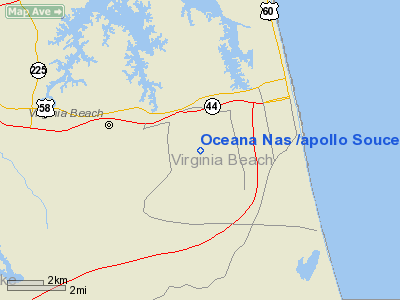
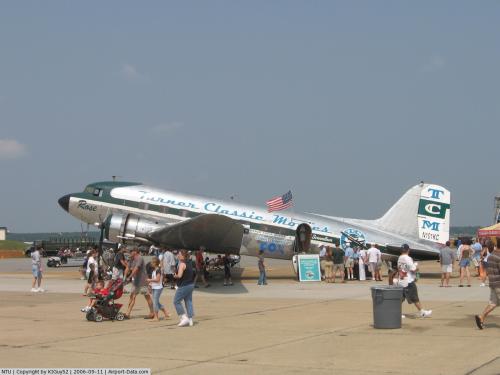 |
(Click on the photo to enlarge) |
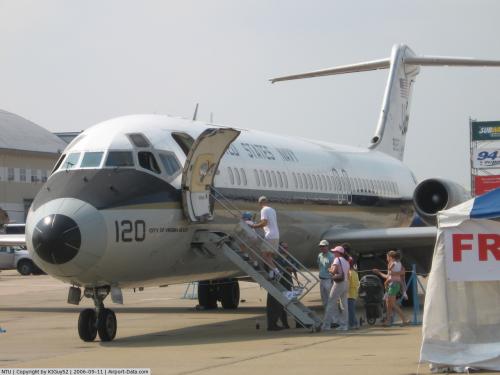 |
(Click on the photo to enlarge) |
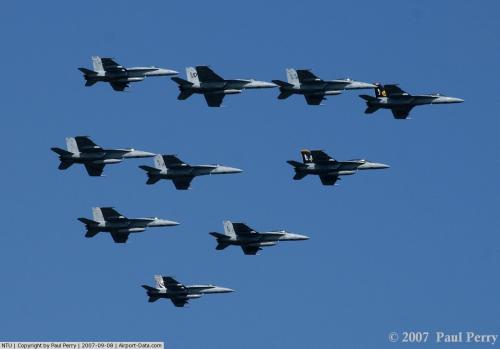 |
(Click on the photo to enlarge) |
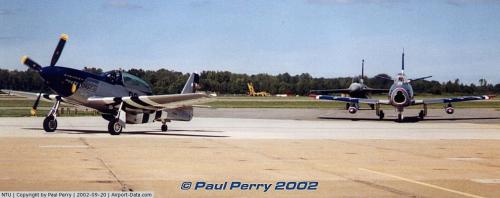 |
(Click on the photo to enlarge) |
Location & QuickFacts
| FAA Information Effective: | 2008-09-25 |
| Airport Identifier: | NTU |
| Airport Status: | Operational |
| Longitude/Latitude: | 076-01-54.8051W/36-49-21.8775N
-76.031890/36.822744 (Estimated) |
| Elevation: | 23 ft / 7.01 m (Estimated) |
| Land: | 0 acres |
| From nearest city: | 3 nautical miles SW of Virginia Beach, VA |
| Location: | Virginia Beach County, VA |
| Magnetic Variation: | 10W (1990) |
Owner & Manager
| Ownership: | Navy owned |
| Owner: | U.s. Navy |
| Address: | Oceanographic Ofc-code 3142
Washington, DC 20373 |
| Manager: | Commanding Officer |
| Address: | Naval Air Station Oceana
Virginia Beach, VA 23460 |
Airport Operations and Facilities
| Airport Use: | Private |
| Segmented Circle: | No |
| Control Tower: | Yes |
| Lighting Schedule: | DUSK-DAWN |
| Beacon Color: | Split-Clear-Green (lighted military airport) |
| Sectional chart: | Washington |
| Region: | AEA - Eastern |
| Boundary ARTCC: | ZDC - Washington |
| Tie-in FSS: | DCA - Leesburg |
| FSS on Airport: | No |
| FSS Toll Free: | 1-800-WX-BRIEF |
| NOTAMs Facility: | NTU (NOTAM-d service avaliable) |
Airport Services
| Bottled Oxygen: | HIGH/LOW |
| Bulk Oxygen: | HIGH/LOW |
Runway Information
Runway 05L/23R
| Dimension: | 8001 x 150 ft / 2438.7 x 45.7 m |
| Surface: | ASPH-CONC, |
| Pavement Class: | 18 /R/C/W/T |
| Edge Lights: | High |
| |
Runway 05L |
Runway 23R |
| Longitude: | 076-02-33.1330W | 076-01-27.1410W |
| Latitude: | 36-48-53.8130N | 36-49-52.5030N |
| Elevation: | 20.00 ft | 20.00 ft |
| Alignment: | 42 | 127 |
| Traffic Pattern: | Left | Left |
| Arresting: | E28B | E28B |
| Centerline Lights: | No | No |
|
Runway 05R/23L
| Dimension: | 12000 x 200 ft / 3657.6 x 61.0 m |
| Surface: | ASPH-CONC, |
| Pavement Class: | 50 /R/C/W/T |
| Weight Limit: | Single wheel: 115000 lbs.
Dual wheel: 170000 lbs.
Dual tandem wheel: 260000 lbs. |
| Edge Lights: | High |
| |
Runway 05R |
Runway 23L |
| Longitude: | 076-02-59.7370W | 076-01-20.7550W |
| Latitude: | 36-48-19.8460N | 36-49-47.8540N |
| Elevation: | 19.00 ft | 22.00 ft |
| Alignment: | 42 | 127 |
| Traffic Pattern: | Left | Left |
| Arresting: | E28B | E28B |
| Approach lights: | ALSF1
ALSO OLS. | ALSF1
ALSO OLS. |
| Centerline Lights: | Yes | Yes |
| Touchdown Lights: | Yes | No |
|
Runway 14L/32R
| Dimension: | 8001 x 150 ft / 2438.7 x 45.7 m |
| Surface: | ASPH-CONC, |
| Pavement Class: | 19 /R/C/W/T |
| Edge Lights: | High |
| |
Runway 14L |
Runway 32R |
| Longitude: | 076-02-13.0800W | 076-01-02.0740W |
| Latitude: | 36-50-04.6390N | 36-49-09.8700N |
| Elevation: | 20.00 ft | 20.00 ft |
| Alignment: | 127 | 127 |
| Traffic Pattern: | Left | Left |
| Arresting: | E28B | E28B |
| Centerline Lights: | No | No |
|
Runway 14R/32L
| Dimension: | 8000 x 200 ft / 2438.4 x 61.0 m |
| Surface: | ASPH-CONC, |
| Pavement Class: | 58 /R/C/W/T |
| Edge Lights: | High |
| |
Runway 14R |
Runway 32L |
| Longitude: | 076-02-19.0430W | 076-01-08.0400W |
| Latitude: | 36-49-59.6400N | 36-49-04.8780N |
| Elevation: | 20.00 ft | 22.00 ft |
| Alignment: | 127 | 127 |
| Traffic Pattern: | Left | Left |
| Arresting: | E27B | E28B |
| Approach lights: |
OLS. | ALSF1
OLS. |
| Centerline Lights: | Yes | Yes |
|
Radio Navigation Aids
| ID |
Type |
Name |
Ch |
Freq |
Var |
Dist |
| PVG | NDB | Portsmouth | | 241.00 | 10W | 20.1 nm |
| EY | NDB | Chesi | | 233.00 | 09W | 21.5 nm |
| PJS | NDB | Henry | | 375.00 | 09W | 29.0 nm |
| RK | NDB | Waley | | 249.00 | 10W | 32.6 nm |
| FAF | NDB | Felker | | 226.00 | 08W | 34.0 nm |
| LLW | NDB | Woodville | | 254.00 | 10W | 36.0 nm |
| BDB | NDB | Accomack | | 336.00 | 11W | 46.3 nm |
| AKQ | NDB | Wakefield | | 274.00 | 09W | 47.6 nm |
| NTU | TACAN | Oceana | 113X | | 10W | 0.3 nm |
| NGU | TACAN | Chambers | 048X | | 10W | 13.7 nm |
| LFI | TACAN | Langley | 070X | | 10W | 22.3 nm |
| ECG | VOR/DME | Elizabeth City | 072X | 112.50 | 07W | 34.7 nm |
| ORF | VORTAC | Norfolk | 116X | 116.90 | 07W | 9.1 nm |
| CCV | VORTAC | Cape Charles | 059X | 112.20 | 10W | 31.6 nm |
| FKN | VORTAC | Franklin | 043X | 110.60 | 09W | 47.7 nm |
| CVI | VORTAC | Cofield | 093X | 114.60 | 09W | 48.7 nm |
| HCM | VORTAC | Harcum | 025X | 108.80 | 07W | 49.8 nm |
Remarks
- SERVICE-A-GEAR: A-G NORMALLY RIGGED ALL RWYS.
- NS ABTMT: STRICT COMPLIANCE RQR WITH PROGRAM OUTLINED IN FLIP AP/1 SUPPLEMENTARY ARPT RMK.
- CSTMS/AG/IMG: AVBL OCEANA NAS BASED TACTICAL ACFT ONLY. RQR 48 HR PN TO BASE OPS. AIRCREW RQR TO REMAIN IN ACFT TIL RELEASED BY CSTMS.
- TWY A3, FEEDER TWY FROM A TWY TO RAMP AREA, 1ST FEEDER TWY SOUTH OF FUEL PITS.
- HANGAR 145 AND REVISE RAMP AREA EXTENDING SE CORNER OF RAMP FROM JUST SOUTH OF FUEL PITS TO APPROXIMATELY THE END OF THE OVER RUNS.
- JASU: (NC-10C) (NC-8A) (NCPP-105 CTC AIR OPS DUTY OFFICER TO ENSURE AVBL.)
- FUEL: NO FUEL SVC AVBL 0330-1300Z++ DUE PERS RSTD. TRAN HOT PIT AVBL 1300-2300Z++ MON-FRI, PPR; UNAVBL WKEND/HOL.
- FLUID: SP LHOX LOX.
- OIL: 0-156.
- TRAN ALERT: TRAN LINE 1230-0330Z++ MON-FRI; 1230-2330Z++ SAT, SUN, AND HOL. LTD PRK/STOR FAC. DUR PEAK PERIODS EXTV DELAY IN TRAN SVG.
- RSTD: PPR DSN 433-2162/2163, C757-433-2162/2163. STR-IN FINAL LDG ONLY 0300-1200Z++DLY; 0300-1800Z++SUN VICE FINAL LDG ONLY 0400-1200Z++ DLY; 0400-1800Z++ SUN ALL F/W AND COPTER FLT ABV 1000' ARR/DEP NTU MUST FILE IFR FLT PLAN. VFR/SPECIAL VFR COPTER RTE MANDATORY FOR ALL COPTER FLT AT OR BLW 1000'.
- CAUTION: DUR VMC ALL DEP AND PRACTICE INST APCH FLY RWY HDG AND DO NOT EXCEED 1000' TIL PAST DEP END DUE EXTV OVERHEAD TFC.
- TFC PAT: SIMULTANEOUS LDG/DEP ARE CONDUCTED ON PARL RWY LCTD 700' APART. EXTV JET TRNG OCEANA NAS/FENTRESS NALF. REDUCED RWY SEPARATION STD IN EFF USN/USMC ACFT. DUR PEAK PERIODS EXP ONE APCH TO FULL STOP LDG.
Images and information placed above are from
http://www.airport-data.com/airport/NTU/
We thank them for the data!
| General Info
|
| Country |
United States
|
| State |
VIRGINIA
|
| FAA ID |
NTU
|
| Latitude |
36-49-14.535N
|
| Longitude |
076-02-00.753W
|
| Elevation |
22 feet
|
| Near City |
VIRGINIA BEACH
|
We don't guarantee the information is fresh and accurate. The data may
be wrong or outdated.
For more up-to-date information please refer to other sources.
|
 |



